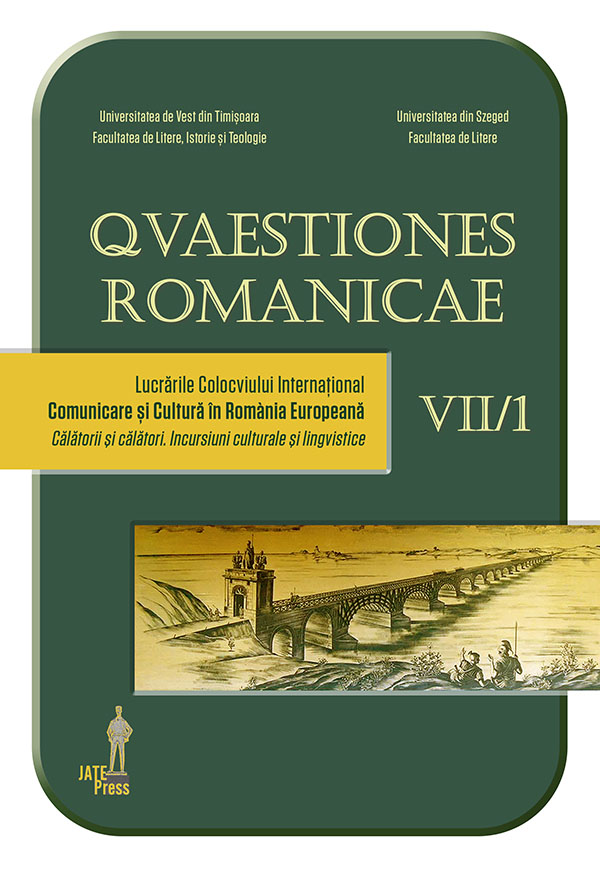Drumul spre Tenerife – o călătorie dinspre simbol spre referent
Abstract: (A Voyage to Tenerife – travelling from symbol to reference) In Eugen Dorcescu’s poetry, the road and the way are two symbols which have in common, at least, their strong spiritual aim: Tenerife, Nirvana respectively. In the existential project delivered by his literary works, Tenerife, the main artistic symbol in “The Voyage to Tenerife” (2009), refers to the last stage of the self’s way to “Nirvana” (2014). This is one of the clearest semantic differences between the terms road and way: while the road implies the possibility of travelling to a concrete terrestrial destination, the way is categorically spiritual and abstract. Unlike Macedonski’s emir, Dorcescu’s lyrical ego reaches Tenerife, takes into account its real reference and becomes his authorized interpret. Before travelling to Tenerife, the poet imagines the road to Tenerife as an archetype, approaching it through a lot of symbolic concepts, such as: the inner road, the road assimilated by conscience, the road as a happy dream, as the idea of voyage itself, as an axis mundi, as the metaphysical way, as a divine revelation etc. He insists on suggesting the spiritual values of the road and on comparing it to the superior way – having in view their very similar deep structures of significance. Reaching the terrestrial destination of the voyage is salutary and relevant for the poetic traveller (“Tenerife/ God’s fist/ holding together/ keeping together/ the inferno and/ the paradise”). There is no way for a way back from Tenerife (“there is no way/ back/ from Tenerife”).
Keywords: Voyage, symbol, road, way, hiperonime.
Rezumat: Drumul şi calea sunt în poezia lui Eugen Dorcescu simboluri sensibil diferenţiate, care au însă aceeaşi ţintă spirituală: Tenerife, respectiv Nirvana. În proiectul existenţial pe care îl reflectă opera, Tenerife, simbolul criptat artistic în „Drumul spre Tenerife” (2009), marchează ultima etapă în calea spre „Nirvana”, titlu al unui volum apărut în 2014. Aceasta este una dintre diferenţele semantice notabile: drumul admite şi o călătorie concretă, spre o destinaţie terestră, pe când calea este categoric spirituală, pretându-se doar la proiecţii abstracte. Spre deosebire de emirul lui Macedonski, eul liric dorcescian parcurge până la capăt drumul spre Tenerife, ia act de referentul său real şi devine interpretul autorizat al acestuia. Înainte de a realiza „drumul spre Tenerife”, el îl imaginează ca arhetip, atribuindu-i statutul semantic de hiperonim pentru numeroase tipuri de drumuri simbolice: drumul în interiorul propriei fiinţe, drumul asimilat de conştiinţă, drumul ca vis fericit, drumul ca întruchipare a ideii de voiaj, drumul ca ax al lumii, drumul metafizic, drumul ca revelaţie divină etc., insistând asupra valenţelor sale spirituale şi raportându-l frecvent – la nivelul structurilor adânci – la superioara cale, nu doar tangentă, ci şi interferentă. Atingerea ţintei terestre este salutară prin forţa ei revelatorie („Tenerife/ pumnul lui Dumnezeu/ strângând laolaltă/ ţinând împreună/ infernul şi/ paradisul”). Ea anulează drumul şi, implicit, returul („nu există drum/ de întoarcere/ din Tenerife”).
Cuvinte-cheie: călătorie, simbol, drum, cale, hiperonim.
